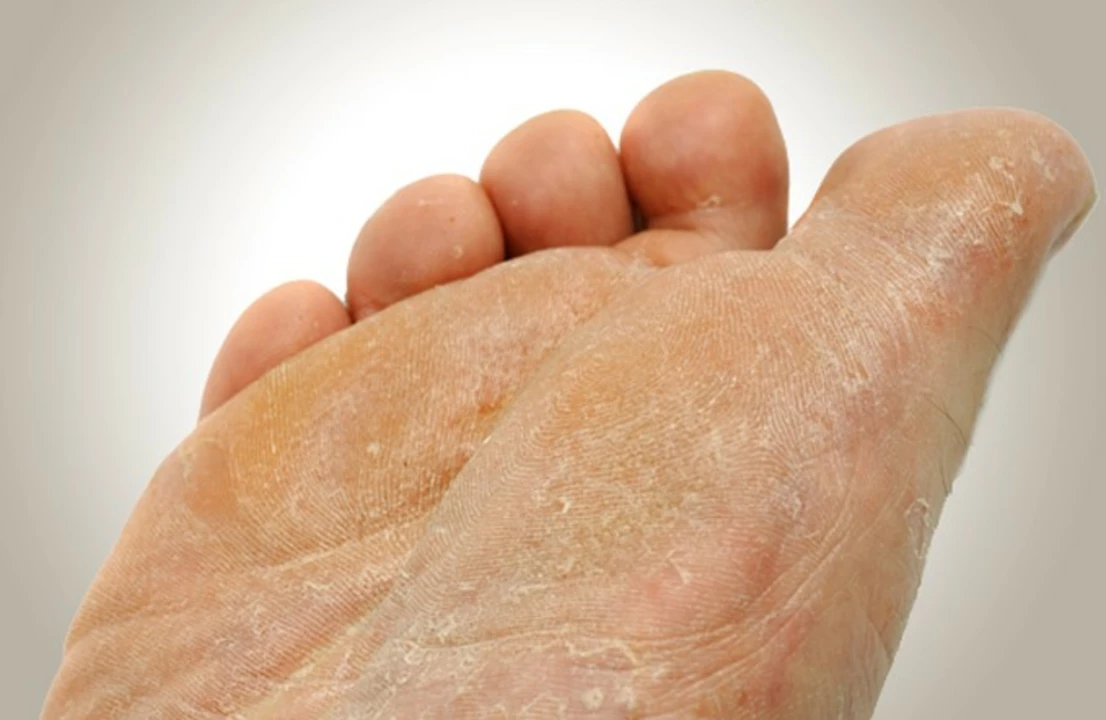Athlete's Foot: What It Is and How to Beat It
Think your itchy, scaly feet are just dry skin? They might be athlete's foot (tinea pedis) — a common fungal infection that loves warm, damp places. It can spread fast between toes, on floors, and through shared towels or shoes. The good news: most cases clear with simple care and the right antifungal treatment.
Spot It Fast — Symptoms to Watch For
Typical signs are itching, burning, flaky skin between toes, cracked skin, or red patches on the soles. Blisters or peeling can show up, too. If you have diabetes or poor circulation and notice any foot sores, see a doctor right away — infections can get serious.
Treatments That Actually Work
Start with these practical steps at home: keep feet clean and dry, wash daily with soap, dry thoroughly between toes, and change socks every day — more if you sweat. Use breathable shoes and rotate pairs so each has time to air out. Antifungal powders can help keep moisture down.
For medicine, OTC topical antifungals usually work well. Look for creams or sprays containing terbinafine, clotrimazole, or miconazole. Apply exactly as the label says and continue for the full course — stopping early is a common reason the fungus returns. If a topical doesn't clear the infection after 2–4 weeks, talk to your provider about a prescription. For stubborn or widespread cases, doctors may prescribe oral antifungals like terbinafine or itraconazole, but those need medical supervision because of possible side effects and drug interactions.
Quick tips while treating: use a fresh towel for your feet, disinfect shower floors if needed, and don’t walk barefoot in locker rooms or public pools. If one foot is infected, treat both to avoid re-infection.
Want to speed recovery? Keep nails short and clean — fungal nails often hang on to the infection. Throw away or treat old socks and shoes that smell or stay damp. Antifungal shoe sprays or placing shoes in sunlight can reduce fungal load.
Avoid home remedies that promise instant cure. Some may help with mild symptoms, but many aren’t proven and can delay effective treatment. If you try a natural product, use it alongside proven antifungal creams, not instead of them.
When to see a doctor: the rash spreads quickly, gets very painful, develops pus, or doesn’t improve after a few weeks of OTC treatment. Also get checked if you have diabetes, a weakened immune system, or recurring infections. A doctor can confirm the diagnosis, prescribe stronger meds, and check for fungal nail involvement.
Preventing return is mostly about keeping feet dry and limiting exposure. Change socks after exercise, choose breathable footwear, avoid sharing socks or towels, and use shower sandals in public spaces. With a bit of attention and the right antifungal, most cases clear up and stay gone.

Athlete's Foot and Skin Allergies: How to Tell the Difference
May 16 2023 / Health and WellnessAs a blogger, I've come across a common question that many of my readers have asked: how can we tell the difference between athlete's foot and skin allergies? Athlete's foot is a fungal infection that usually affects the spaces between the toes, while skin allergies are reactions to irritants or allergens that can appear anywhere on the body. Some key differences include the appearance of the rash, the location, and how the condition responds to treatment. It's important to consult a healthcare professional to get an accurate diagnosis and treatment plan. In my next blog post, I'll delve deeper into each condition and share some tips on preventing and managing both athlete's foot and skin allergies.
VIEW MORE